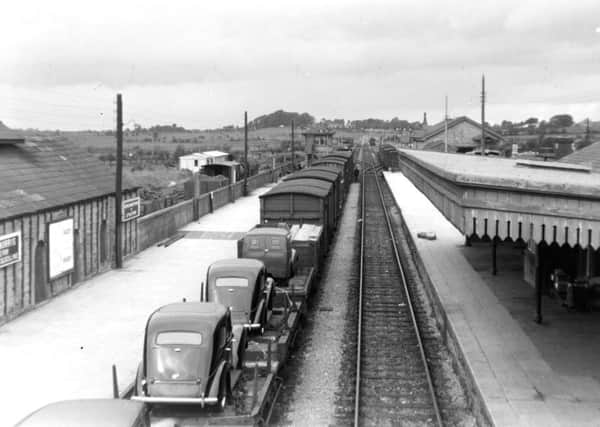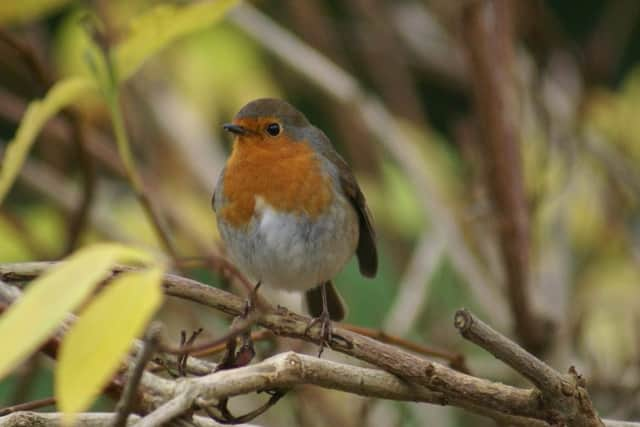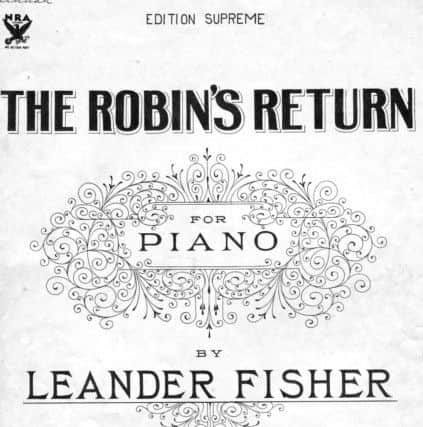Builder of roads and railways built a unique relationship with robins


Little is known about its composer, Leander Fisher, except that he was born around 1850 and taught music in America.
There’s a tantalising snippet of circumstantial evidence that he either composed or arranged The Robin’s Return in the mid-1870s, because he is credited by several dependable sources as being the composer of another piano solo called The Robin’s Departure in 1875.
Advertisement
Hide AdAdvertisement
Hide AdWe’ll probably never know if Leander was feeling festive when he wrote the pieces, but once again, and with perfect timing as Christmas approaches, Roamer’s robins have returned.


Sometimes, in the gardens of my previous abodes, there has only been one robin, but this is the second or third year in succession that there has been a “happy couple”!
According to the RSPB: “The UK’s favourite bird with its bright red breast is familiar throughout the year...the robin is one of the few birds that hold a territory all year round.”
But I only see mine around Christmas, generally flitting from the hedge when I open my back door, as if they’ve been waiting for the crumbed cheese crackers that I usually offer them.
Advertisement
Hide AdAdvertisement
Hide AdDuring recent Yuletides News Letter readers have shared pictures and seasonal stories about robins on this page, and a few years ago one of ornithology’s most acclaimed “robin experts” was mentioned.


James Parsons Burkitt (1870-1959) was a civil engineer who was born in Donegal but who spent much of his life in Ulster.
And it was here, from the early 1900s, that he started studying robins, ultimately becoming a world authority.
James Burkitt was born on 20th August 1870 in Killybegs, the third son of the Reverend Thomas Henry Burkitt, a Presbyterian minister, and his wife Emma Eliza, née Parsons.
Advertisement
Hide AdAdvertisement
Hide AdJames went to Galway Grammar School, then Queen’s College Galway and the Royal University of Ireland, qualifying as a civil engineer with first class honours.


He then became an assistant to James Perry, county surveyor of Galway, and supervised the reinforcement of a big bridge and the erection of a pier and swing-bridge over a sea estuary.
It might seem unusual that a highly-qualified professional engineer would become an acclaimed ornithologist, but his boss James Perry and engineer-brother John Perry were also multi-skilled.
The latter, a Fellow of the Royal Society of Engineers, invented a navigational gyrocompass in 1916 and together with his brother founded the Galway Electric Light Company.
Advertisement
Hide AdAdvertisement
Hide Ad(It’s also interesting to note that James Perry’s daughter Alice graduated with a first class honours degree in civil engineering from Queen’s College Galway in 1906 – the first woman to graduate with a degree in engineering in Ireland or Great Britain. Indeed, she was probably the first woman to graduate as an engineer anywhere in the world!)


In May 1893 James Burkitt became an assistant engineer on the Westport and Mulranny extension of the Midland Great Western railway, and in February 1894 he oversaw the construction of the Collooney and Claremorris railway.
Then he moved to Belfast and worked on the city’s waterworks before extending his brief to the Downpatrick waterworks in 1897.
He appears to have moved back briefly to Co Donegal before being appointed as county surveyor for Fermanagh at the end of 1898, a post that he held until his retirement in 1940.
Advertisement
Hide AdAdvertisement
Hide AdHe was responsible for extensive road improvements in the county and for the introduction of tarmacadam road surfaces in 1904.
He also built several bridges during the 1920s and 1930s but during his spare time he was devoted to the study of European robins, across the county and in the garden of his handsome red-brick home ‘Lawnakilla’, near Enniskillen.
He started ringing robins in October 1922 and his research, published in the journal British Birds between 1924 and 1926, was one of the first studies of bird behaviour and territoriality that used rings, which enabled individual birds to be easily identified in the field.
His work on plotting bird distribution was greatly praised, making him a national and international authority.
Advertisement
Hide AdAdvertisement
Hide AdHe also made significant contributions to the understanding of threat display, territorial behaviour and birdsong, and was the first ornithologist to use ringing to estimate the average age of birds.
It’s thought that one of his ringed birds was the oldest, known, living robin in the world.
He ringed a female robin on 18th December 1927 and trapped it again, near Ballinamallard, on 14th July 1938, making it at least 11 years old – a world record.
Married to Glendoline, daughter of William Henry Hill of Cork, James Burkitt’s elder son was the surgeon Denis Parsons Burkitt, a former army doctor and medical missionary who made two historic contributions to medical science.
Advertisement
Hide AdAdvertisement
Hide AdThe first was the description, distribution, and ultimately, the causes of a paediatric cancer that bears his name – Burkitt’s lymphoma
Denis Burkitt’s second important contribution to medicine was proving that many Western diseases were the result of diet and lifestyle.
He wrote a book Don’t Forget Fibre in your Diet which became an international best-seller.
James Burkitt was Co Fermanagh’s surveyor for over 40 years until he retired in April 1940.
He died on 30th March 1959 at Ballinamallard, and was buried in Trory graveyard.